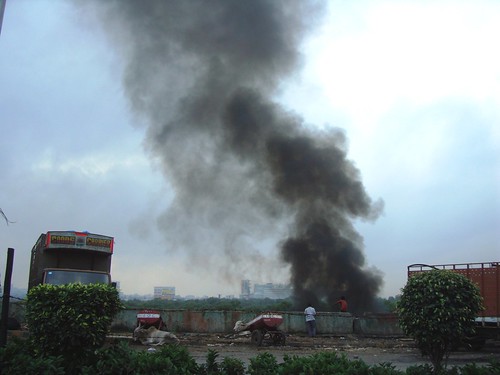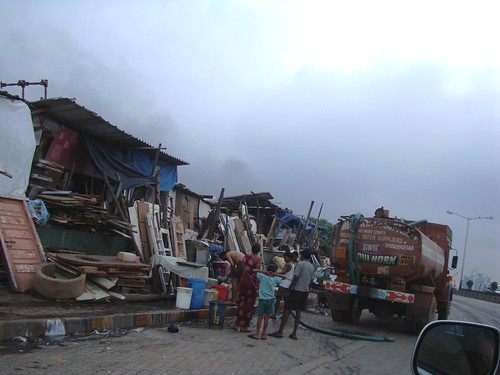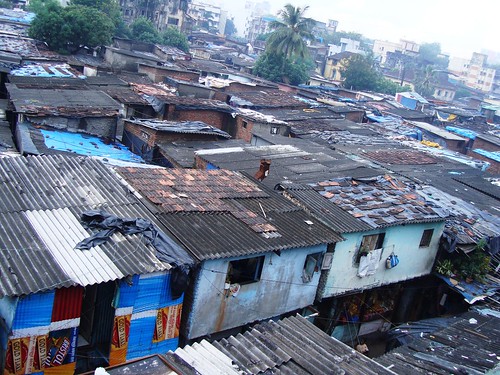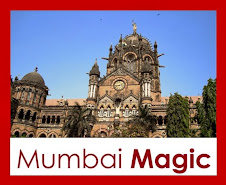 Here's a scene from the early part of the play. The two first meet at a college party in St. Stephen's, Delhi, where they discover they are both students of English literature. He is a pompous but funny wastrel who loves to drink; she is sharp and witty and destined to be top of her class.
Here's a scene from the early part of the play. The two first meet at a college party in St. Stephen's, Delhi, where they discover they are both students of English literature. He is a pompous but funny wastrel who loves to drink; she is sharp and witty and destined to be top of her class. There was a projection screen at the back, on which they used a montage of music and visuals from each decade to show the progression of time. The images and songs were right for the period, but it looked like the sort of thing an amateur would put together on Powerpoint. A little more attention to style and design would have helped. I felt like I was back in college, putting on a last-minute show for some college festival.
There was a projection screen at the back, on which they used a montage of music and visuals from each decade to show the progression of time. The images and songs were right for the period, but it looked like the sort of thing an amateur would put together on Powerpoint. A little more attention to style and design would have helped. I felt like I was back in college, putting on a last-minute show for some college festival.The play itself was pretty decent, some of the lines were really funny, although the conversations sounded like they were set in Eton rather than Delhi. I must confess, I'm not a big fan of the kind of Indian theatre where the script sounds like an Englishman wrote it. Granted, the main characters were students of literature, but they sounded so very unreal. There was also a lot of slap-stick by supporting characters, and a final emotional scene with so much gawky hamming by the drunk wastrel that both my husband and I couldn't bear to watch it. Overall, though, not a bad effort, 6 out of 10 on the Deepa Scale!
The play finished at 5:30, so we decided to wander down past Marine Drive to Chowpatty Beach. Everyone wanted to eat pav-bhaji.

.
Badshah has absolutely delightful panipuris. They're served by a guy wearing a pair of gloves, so of course, they lack that extra tang of sweaty hands! But it's lip-smackingly good, and you can ask for a filling of your choice (potatoes, sprouted moong, chole, or boondi). I had hot chole filling, with ice cold pani and an absolutely heavenly meetha chutney. After you're done eating, there's a guy who comes around handing out paper napkins.
 After panipuri, I dragged everyone to my favourite pav-bhaji stand - Shetty's. They also do some really good sandwiches.
After panipuri, I dragged everyone to my favourite pav-bhaji stand - Shetty's. They also do some really good sandwiches. Pramod, me, Praveena and her husband Rajeev. Four very hungry people. I ordered a cheese pav-bhaji, while they stuck to the normal stuff. Pramod as usual, wanted his pav without maska.
Pramod, me, Praveena and her husband Rajeev. Four very hungry people. I ordered a cheese pav-bhaji, while they stuck to the normal stuff. Pramod as usual, wanted his pav without maska. 

 By this time, the sun was setting over the Arabian Sea. The municipal van came around on its patrol, so the hawkers selling colourful paper fans and balloons disappeared. We decided to head out to Dragonfly at Express Towers for a drink. It's quite a swish lounge bar and restaurant, and some of the tables have really lovely views of the Arabian Sea.
By this time, the sun was setting over the Arabian Sea. The municipal van came around on its patrol, so the hawkers selling colourful paper fans and balloons disappeared. We decided to head out to Dragonfly at Express Towers for a drink. It's quite a swish lounge bar and restaurant, and some of the tables have really lovely views of the Arabian Sea. 
I didn't want to sit anywhere near the big TV screen, so every now and then Rajeev would pop around the corner to watch the Singapore Grand Prix. We were discussing Lehman Brothers and bonuses - or the lack of them - when Rajeev suddenly piped up: "That's the Spanish national anthem!"
"Huh?" I said
"Must be Alonso!"
"Er...?"
"Alonso! He must've won!"
"Ah", I said, nodding like it all made sense.
At some point, we finally paid our tab (well, Praveena paid!) and left. Downstairs, the Victorias were doing their little pleasure rides on Marine Drive. I watched a young couple (honeymooners?) smiling and enjoying their ride on a jingling carriage.








 We walked a little further, and found another individual of the same species. But I was more interested in the liana twirled next to it. These woody climbers are pretty strong, they grow straight up until they find a suitable host and then start to twine themselves around the host. But why do they do this when they aren't parasites?
We walked a little further, and found another individual of the same species. But I was more interested in the liana twirled next to it. These woody climbers are pretty strong, they grow straight up until they find a suitable host and then start to twine themselves around the host. But why do they do this when they aren't parasites?


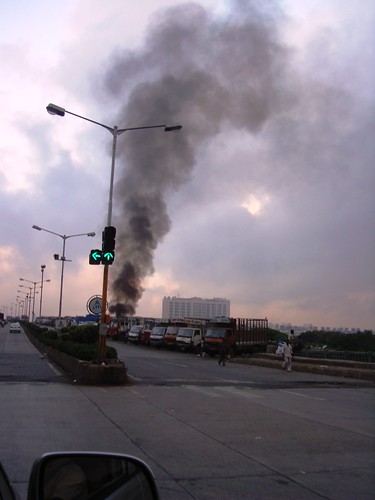 We stopped for a closer look. Here's what we saw - in a clearing behind a low wall, a big rubbish heap was being burnt. Maybe they were burning the left-overs from the recycling factories - the thick smoke told me it was probably at least partly plastic. A young man was sitting there - he didn't move at all in the 10 minutes that I was there - I got the feeling he was watching over the fire. There were two bullock carts, transporting oil, the bullocks resting in preparation for the day ahead.
We stopped for a closer look. Here's what we saw - in a clearing behind a low wall, a big rubbish heap was being burnt. Maybe they were burning the left-overs from the recycling factories - the thick smoke told me it was probably at least partly plastic. A young man was sitting there - he didn't move at all in the 10 minutes that I was there - I got the feeling he was watching over the fire. There were two bullock carts, transporting oil, the bullocks resting in preparation for the day ahead.